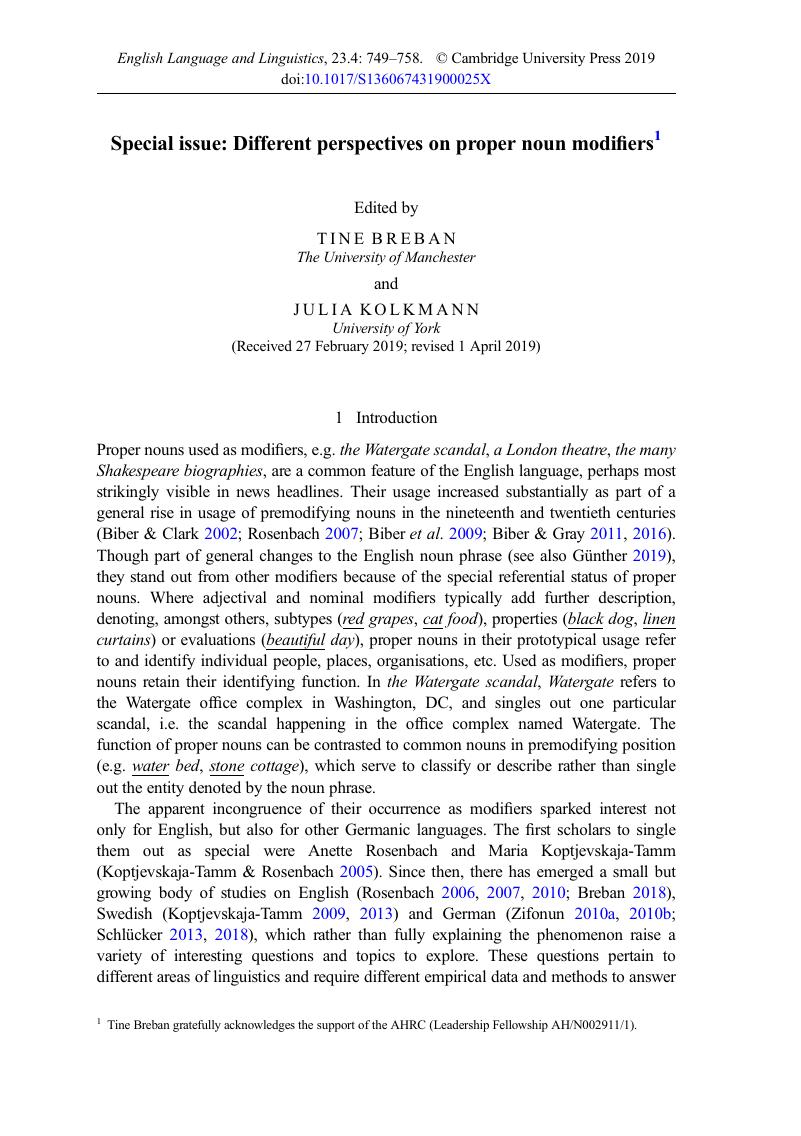Crossref Citations
This article has been cited by the following publications. This list is generated based on data provided by Crossref.
BREBAN, TINE
and
DE SMET, HENDRIK
2019.
How do grammatical patterns emerge? The origins and development of the English proper noun modifier construction.
English Language and Linguistics,
Vol. 23,
Issue. 4,
p.
879.
VARTIAINEN, TURO
2019.
Fromtwig-skinnytoKate Moss skinny: expressing degree with common and proper nouns.
English Language and Linguistics,
Vol. 23,
Issue. 4,
p.
901.
Chen, Tingting
Du, Lixia
and
Jan, Naeem
2022.
English Semantic Analysis Algorithm and Application Based on Improved Attention Mechanism Model.
Mathematical Problems in Engineering,
Vol. 2022,
Issue. ,
p.
1.





